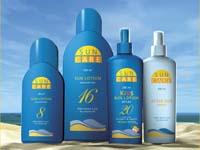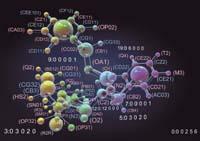New component for sun protection
In both Britain and Euskal Herria, most cases of cancer are skin. And solar radiation is the main cause of skin cancer. Therefore, it is not surprising that researchers strive to improve solar creams.
Protective elements

Conventional creams contain components to protect against the ultraviolet rays emitted by the sun. They are anti-radiant UVA and UVB and can be of two types, physical or chemical. The former reflect radiation and the others transform it to make it safe.
In addition, protective creams contain skin promoting ingredients such as vitamin E. This vitamin is antioxidant and captures the free radicals that form in cells by radiation effect. This prevents free radicals from being damaged.
They also contain moisturizing components. Hyaluronic acid, glycerin and other agents collect water from the atmosphere and introduce it into cells, while other oils prevent moisture loss. Finally, most creams include preservatives and aromas.
Key, iron
This time, researchers at Bath University wanted to go a step further. Aware that skin cells secrete free iron due to the action of the sun's rays, they have tried to get the right substance to eliminate it. The final results indicate that they are on the right track.

Free iron aggravates the symptoms of burn—inflammation and pain—and is also dangerous because it helps create free radicals. Free radicals, on the other hand, cause alterations in cellular DNA, with the consequent risk of cancer.
To reduce this risk, and in passing to relieve the symptoms of the burn, the researchers looked for a molecule to remove free iron. This molecule should be able to obtain free iron, so that iron could not intervene in reactions.
On the other hand, they took into account that it is harmful that the molecules that bind to iron remain in the skin for long periods of time, since they also contain intracellular iron. But cells need this mineral to perform their functions, for example, red blood cells need iron to carry oxygen.

Therefore, the molecule to be found by researchers should be able to neutralize free iron and, at the same time, not interfere with the functions of the cell. After three years of research, two prototypes have been developed suitable for marketing.
In prototypes, molecules that bind to iron are trapped within a structure. They are released only when the dose of ultraviolet rays is high. This prevents the risk of cell damage. Also, prototypes are more efficient than conventional solar creams and protection lasts longer.
For now, prototypes have been tested in three-dimensional skin cell cultures and expect them to be prepared to be tested in people in two or three years. If all tests are passed, they will be available on the market before time passes. Anyway, and the cream, how cheap, efficient and sweet shade!
Published in 7K.
Buletina
Bidali zure helbide elektronikoa eta jaso asteroko buletina zure sarrera-ontzian











